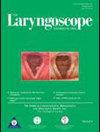Airway Management With Congenital Tracheal Stenosis: Surgical and Anesthetic Consideration
Abstract
Objectives
To investigate demographic data and airway management techniques for patients with congenital tracheal stenosis (CTS) during the preoperative, intraoperative, and postoperative periods.
Study Design
A retrospective chart review.
Methods
This study was a retrospective case series at a single tertiary care pediatric medical center. It encompassed all children diagnosed with CTS who underwent slide tracheoplasty from January 2001 through December 2018. Exclusion criteria were acquired stenosis, tracheomalacia, patients without a confirmed diagnosis of CTS, and those with missing data. Patient demographics and details of airway management were collected and analyzed.
Results
A total of 148 patients met the inclusion criteria. The most common etiology of CTS was congenital tracheal rings (90.5%). The median age at surgery was 9 months (interquartile range [IQR] 3.3–35.4), and the median stenosis length was 4.0 cm (IQR 3.5–5.4). The most frequent comorbidities were genetic diseases, prematurity, and preoperative intubation. The most common related cardiac comorbidities were pulmonary artery sling, patent ductus arteriosus, atrial septal defect, ventricular septal defect, and tetralogy of Fallot. Most of the patients with CTS exhibited 50% to 80% stenosis. Most of the patients underwent thoracic approach slide tracheoplasty. Airway management was primarily accomplished using an oral or nasal endotracheal tube preoperatively, cardiopulmonary bypass during surgical repair, and an oral or nasal endotracheal tube during closure and the postoperative period.
Conclusions
Slide tracheoplasty is an effective treatment for congenital tracheal stenosis. Coordinated airway management between the anesthesia and surgical teams is crucial. Appropriate planning yields the best patient outcomes.
Level of Evidence
4 Laryngoscope, 135:1506–1510, 2025


 求助内容:
求助内容: 应助结果提醒方式:
应助结果提醒方式:


